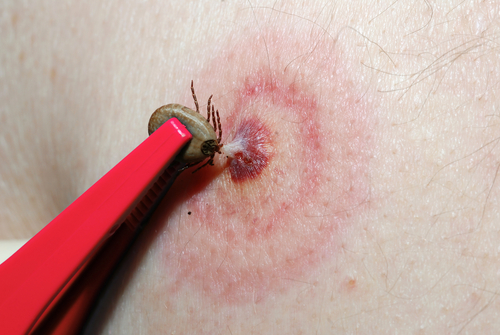 New Health Guide
New Health Guide
A tick bite is not usually dangerous, but it pays well to learn how to treat tick bites. This is because these common creatures, which live outdoors, find their way to our pets' skin as well as ours, and can cause symptoms of disease or infection. Ticks can move from their habitats in the grass, shrubs or trees to our skin when we go outdoors and bite to feed on our blood. They are not usually dangerous, but if serious symptoms occur, you may need immediate treatment.
 Most tick bites are harmless and do not produce any symptoms. However, if you develop an allergic reaction to a tick bite, you may experience swelling and pain on the bite site, rashes, blisters, or breathing difficulty.
Most tick bites are harmless and do not produce any symptoms. However, if you develop an allergic reaction to a tick bite, you may experience swelling and pain on the bite site, rashes, blisters, or breathing difficulty.
Some ticks may carry diseases which can pass on to you when they bite. A tick-borne disease can cause symptoms, which may develop within a few weeks, including:
Seek medical help immediately if these serious symptoms occur.
Tick-borne diseases may include:
Ticks are sometimes so small that it is difficult to see if you have removed the head which is stuck to your skin. But even if you manage to remove the tick, watch out for skin infection.
Always remember to examine your pet and your skin for ticks whenever you return home from places where ticks may live.
Consult your doctor if these symptoms develop:
Bring the tick, if possible, to your doctor's office for identification.
Call 911 or a local emergency number if you experience:
Ticks may live in your lawn and in areas where grass and bushes grow. They may stick to your pet's skin or to your clothes and skin when you go outdoors. Here are some ways to prevent tick bites:
|
Preventive Measures |
How to Do It |
|
Wear protective clothes |
Protect yourself by wearing a hat, long-sleeved shirts, pants, socks and boots. Prevent crawling ticks from going in through gaps in your clothes by tucking them in. Use light-colored clothes to make ticks easier to find. |
|
Use an insect repellent |
Apply insect repellent containing DEET on exposed skin. But please avoid applying it on scratched, cut or irritated skin, or on a child's hands or face. Wash off with soap and water when you go indoors. |
|
Use a bug spray on your clothes |
Use bug spray with permethrin to kill ticks crawling on your clothes. Spray the top of boots, pant legs and the cuff of your sleeves. Wash your outdoor clothes as soon as possible. |
|
Check yourself for ticks |
Carefully check your clothes, hairline, neck and skin often when you are outdoors. Likewise, check your children and pets. Remove ticks from your pets in the same manner as you would remove them from your skin. |
|
Reduce ticks in your backyard |
Clean shady and moist areas where ticks like to live. Keep your grass short, cut overgrown branches, clear out piles of leaves and stack the firewood in dry, sunny areas. |
You may watch the video below to learn the signs, prevention as well as treatment of tick bites: